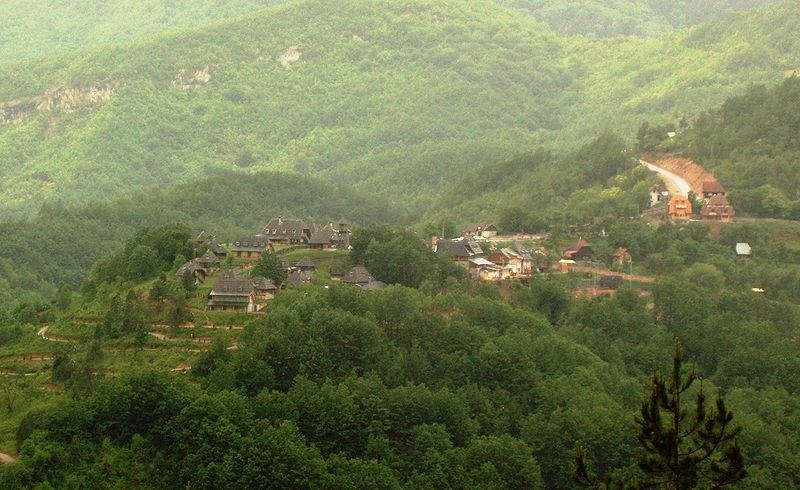 Drvengrad, Serbia
Drvengrad, SerbiaSource: https://commons.wikimedia.org/wiki/File:Drvengrad_-_panorama.JPG
Author: Ant83

Serbia (Србија/Srbija) is a small, landlocked country at the center of the Balkan peninsula. It is considered part of Central Europe and Southeastern Europe. Covering 88,361 sq km (34,116 sq mi), Serbia is bordered by Hungary to the north, Romania to the northeast, Bulgaria to the southeast, Macedonia to the south, Albania to the southwest, Montenegro and Bosnia and Herzegovina to the west, and Croatia to the northeast. On the southern part of Serbia is the partially recognized Republic of Kosovo, which is within Serbia and is not recognized by it as an independent state.
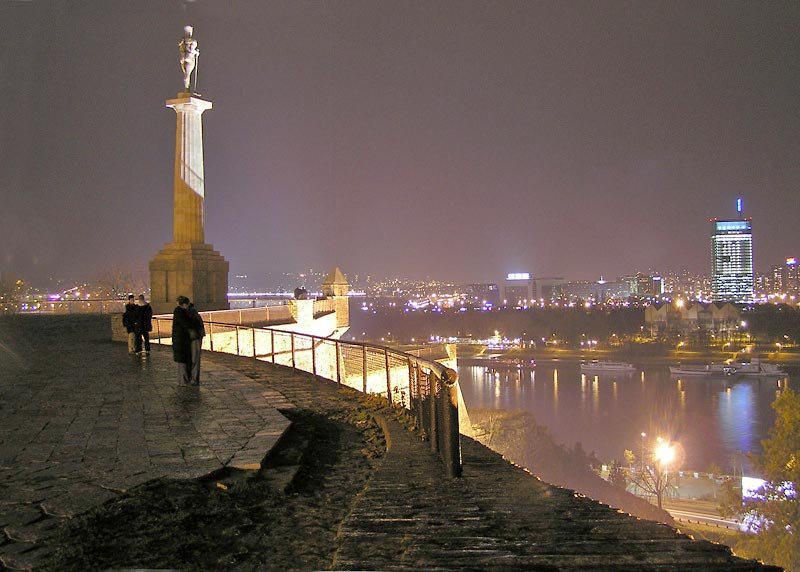 Kalemegdan Fortress Park overlooking Belgrade at night
Kalemegdan Fortress Park overlooking Belgrade at nightSource: https://commons.wikimedia.org/wiki/File:NoviBG_Nov30_2005.jpg
Author: Aleksandar Ćosi&3263;

Serbia has a population of 7.3 million people, of which 83% are ethnic Serbs. The capital and biggest city is Belgrade. Its official language is Serbian. The official currency is the Serbian dinar (RSD). The electricity is 230V/50Hz using European plug.
Serbia observes the Central European Time, which is an hour ahead of Coordinated Universal Time (UTC+1) and two hours in summer. Its phone IDD code is +381. The country had an estimated nominal GDP of $38.921 billion in 2010, and a per capita nominal GDP of $5,262. Its per capita GDP at purchasing power parity stood at $10,808.
The land of present-day serbia has been inhabited for over 8,500 years. Archaeologists have found prehistoric signs created between 6,000 and 4,000 BC which can be claimed as the earliest form of writing.
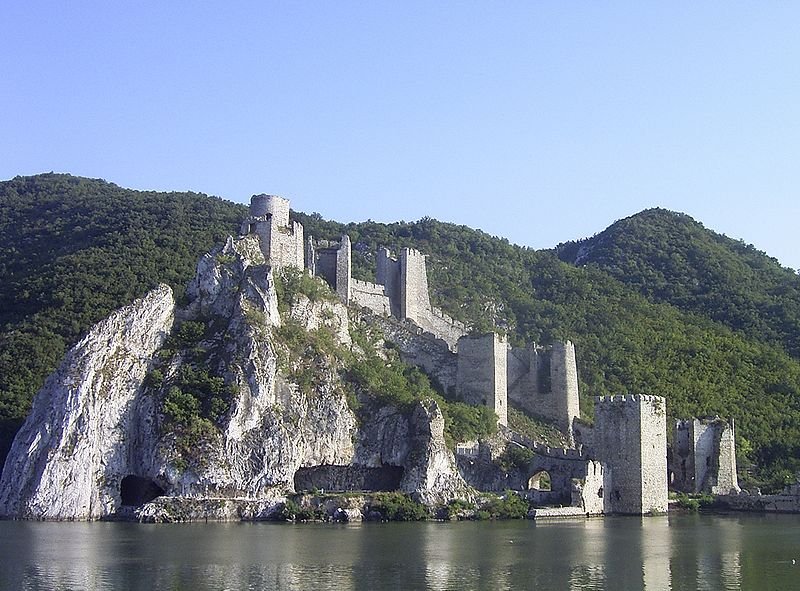 Golubac Fortress, Serbia
Golubac Fortress, SerbiaSource: https://commons.wikimedia.org/wiki/File:Golubac.JPG
Author: Denis Barthel

Serbia was conqured by the Romans in the 2nd century BC. It was even the birthplace of Constantine I, the Roman Emperor who spread Christianity throughout the empire. During the medieval era, a Serbian Empire was founded by Tsar Stefan Duşan in 1346. That was when Serbia reached its biggest size. Over the century, it gradually declined in power with the rise of the Austro-Hungarian Empire and the Ottoman Empire.
After the First World War, the State of Slovenes, Croats and Serbs, and the Kingdom of Serbia merged to form the Kingdom of Serbs, Croats and Slovenes on 1 December, 1918. It was later renamed the Kingdom of Yugoslavia, and monarchy headed by Peter I from 1918 to 1921, Alexander I from 1921 tgo 1934 and Peter II from 1934 to 1945.
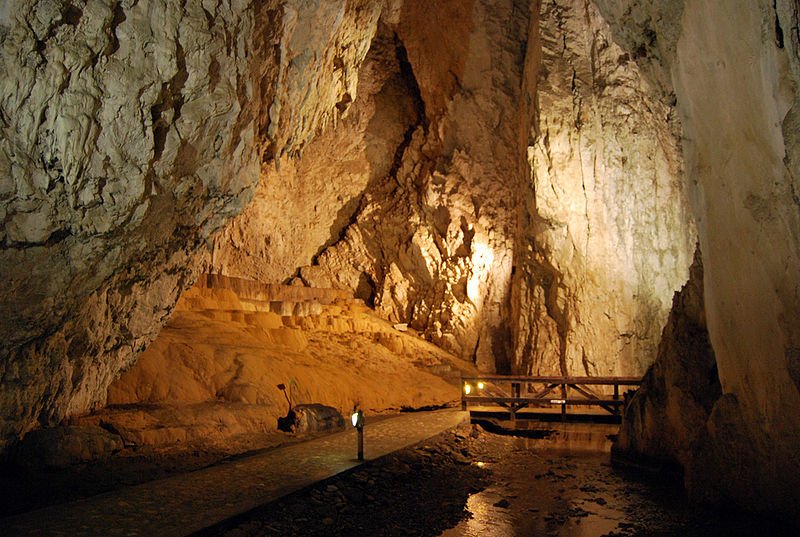 Stopića Cave in Zlatibor, Serbia
Stopića Cave in Zlatibor, SerbiaSource: https://commons.wikimedia.org/wiki/File:Stopica_cave1.jpg
Author: tamburix

The monarchy was deposed in 1945 with the communist takeover of Yugoslavia, and it was renamed the Federal Republic of Yugoslavia, with Serbia within a constituent republic within it, called the Socialist Republic of Serbia.
The rise of Slobodan Milošević to power in 1989 caused tension with the other republics of Yugoslavia, resulting the breaking away of Slovenia, Croatia, Bosnia and Herzegovina and Macedonia, leaving only Serbia and Montenegro which created a new Yugoslav federation, once again called the Federal Republic of Yugoslavia. On 21 May 2006, Montenegro held a referendum which shows that a slim majority favored breaking away.
Since 5 June 2006, Serbia was a separate state and successor of the former federal republic. It is today a member of the United Nations and the Council of Europe, and in the process of seeking membership into the European Union.
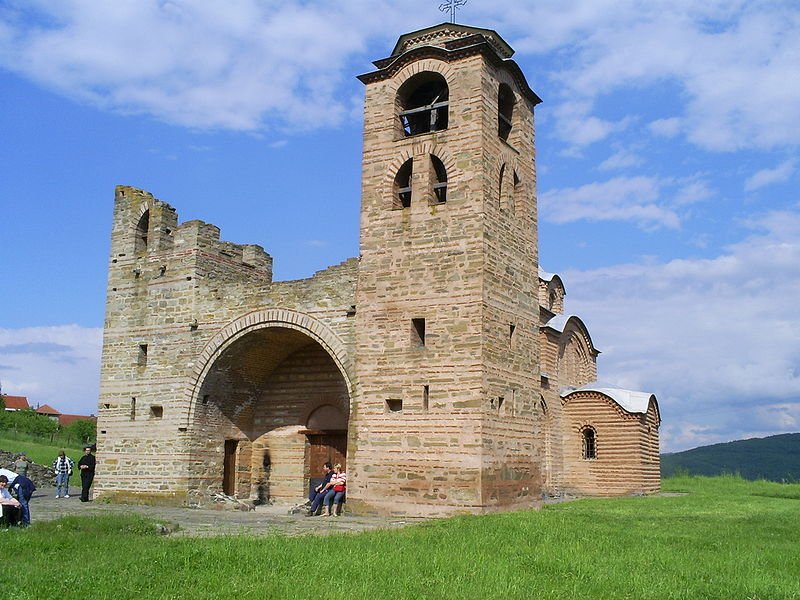 Saint Nicolas Monastery in Kuršumlija, Serbia
Saint Nicolas Monastery in Kuršumlija, SerbiaSource: https://commons.wikimedia.org/wiki/File:Sveti_Nikola_Kursumlija8.jpg
Author: Milica Jovanović-Marković

Planning your visit to Serbia
Visitors the European Union and Bosnia and Herzegovina only need an approved ID to enter Serbia, although citizens of European Union should bring along a passport to avoid hassles. Visitors from Australia, Canada, Israel, Japan, Singapore and the United States do not need a visa for staying in Serbia for up to 90 days.The Belgrade Nikola Tesla Airport (BEG) is the busiest airport in Serbia. It is the hub of the national flag carrier Jat Airways. It receives flights from Amsterdam, Frankfurt, Moscow, Munich, Oslo, Paris, Stockholm, Amsterdam, Cologne, Düsseldorf, Frankfurt, Istanbul, London-Heathrow, Milan, Moscow and Paris, among others.
Major Cities in Serbia
- Belgrade - capital
- Kragujevac
- Kraljevo
- Niš
- Novi Sad
- Požarevac
- Smederevo
- Sremska Mitrovica
- Subotica
- Vršac
Places of Interest in Serbia
- Guča
- Kopaonik National Park
- Palić
- Soko Banja
- Staro Selo
- Zlatibor
 Latest updates on Penang Travel Tips
Latest updates on Penang Travel Tips
 Discover with Timothy YouTube Channel
Discover with Timothy YouTube Channel
 PG Food Channel
PG Food Channel
 Learn Penang Hokkien YouTube Channel
Learn Penang Hokkien YouTube Channel
 SojiMart Videos
SojiMart Videos
Latest from Discover with Timothy: Gurney Bay - what to see and do there
About this website

Hello and thanks for reading this page. My name is Timothy and my hobby is in describing places so that I can share the information with the general public. My website has become the go to site for a lot of people including students, teachers, journalists, etc. whenever they seek information on places, particularly those in Malaysia and Singapore. I have been doing this since 5 January 2003, for over twenty years already. You can read about me at Discover Timothy. By now I have compiled information on thousands of places, mostly in Peninsular Malaysia and Singapore, and I continue to add more almost every day. My goal is to describe every street in every town in Malaysia and Singapore.
Robbie's Roadmap
- Episode 1: Robbie's Journey to Financial Freedom
- Episode 2: Lost in America
- Episode 3: The Value of Money
- Episode 4: The Mentor
- Episode 5: The Thing that Makes Money
- Episode 6: The walk with a Billionaire
- Episode 7: The Financial Freedom Awakening
- Episode 8: Meet Mr Washington
- Episode 9: The Pizzeria Incident
Copyright © 2003-2024 Timothy Tye. All Rights Reserved.


 Go Back
Go Back